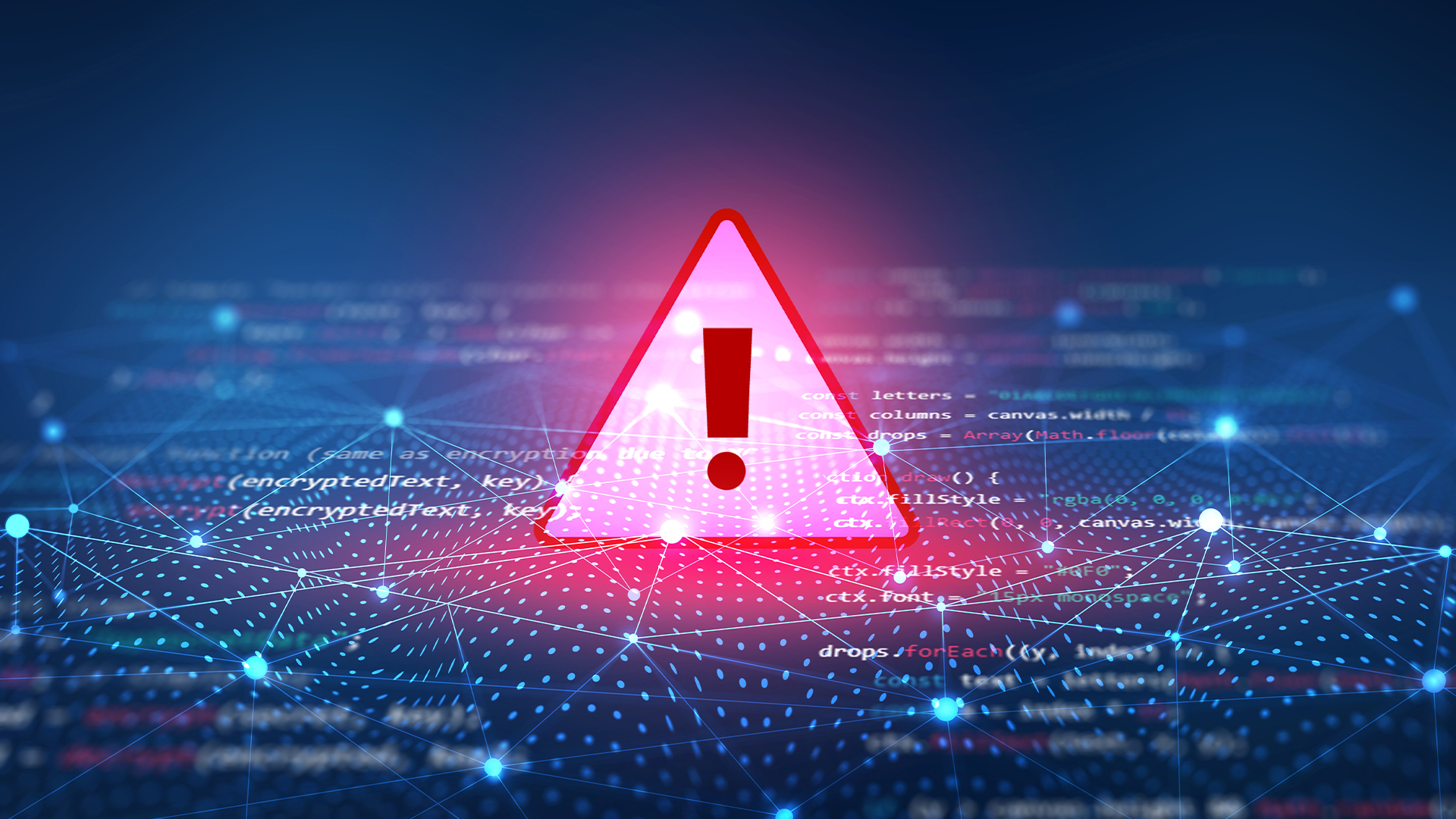Researchers show how easy it is to inject a DSLR camera with ransomware
Hackers can encrypt a camera using just a Wi-Fi connection, demo shows


Researchers have developed a working exploit that allows ransomware to be remotely deployed on DSLR cameras, encrypting all photos on an inserted SD card.
The attack was demonstrated on a Canon EOS 80D and can be performed over both USB and Wi-Fi if a victim was connected to an unsecured public network.
Ransomware can take over a modern DSLR by exploiting the popular Picture Transfer Protocol (PTP) which is used by cameras for a whole host of tasks such as image transfer, taking live pictures and even updating the camera's firmware.
The protocol is an attacker's delight because it's both unauthenticated and supports "dozens of different complex commands," researcher Eyal Itkin of Check Point said in a blog post.
Check Point chose to target the Canon EOS 80D due to Canon's dominance in the DSLR space (controlling more than 50% of the market) and the fact it supports both Wi-Fi and USB.
Canon also has an extensive modding community called Magic Lantern, meaning some initial exploration of the camera's firmware has already been conducted by its users.
"Attackers are profit-maximisers, they strive to get the maximum impact (profit) with minimal effort (cost)," said Itkin. "In this case, research on Canon cameras will have the highest impact for users, and will be the easiest to start, thanks to the existing documentation created by the ML community."
Sign up today and you will receive a free copy of our Future Focus 2025 report - the leading guidance on AI, cybersecurity and other IT challenges as per 700+ senior executives
This form of ransomware distribution could be especially lucrative to attackers due to the high sentimental value people place on photos. People may be more likely to pay out the attacker's ransom demands to preserve cherished memories.
The attack could be particularly effective in tourist hotspot areas where potential victims are connected to the same unsecured Wi-Fi networks as the attackers. The researchers show how quickly a camera could be infected in the video below, complete with a typical ransomware splash page - just like on a PC.
"Chaining everything together requires the attacker to first set-up a rogue WiFi Access Point," said Itkin. "This can be easily achieved by first sniffing the network and then faking the AP to have the same name as the one the camera automatically attempts to connect. Once the attacker is within the same LAN as the camera, he can initiate the exploit."
Exploiting PTP is nothing new. At the Hack in the Box 2013 security conference, researcher Daniel Mende showed how it could be leveraged to access a camera, but Check Point are thought to be the first to show that malware can be deployed using this method.
Canon released a patch for the issue along with a security advisory last week.
Although the exploit was only proven using a Canon camera, "due to the complexity of the protocol, we do believe that other vendors might be vulnerable as well, however it depends on their respective implementation," Itkin told The Verge.
"This is an interesting vulnerability. It does, however, require the victim to be connected to a rogue wifi hotspot which limits the attacker to being in close physical proximity to the intended victim," said Javvad Malik, security awareness advocate at KnowBe4.
"For some, having ransomware on their camera may be little more than a minor inconvenience where a memory card needs to be discarded," he added. "The impact to a professional photographer, like a journalist, or wedding photographer would be significant - so those professionals should be taking extra precautions regardless of this particular vulnerability."
Ransomware has seen somewhat of a resurgence in 2019, according to figures from SonicWall in July.
Attacks of this type on UK businesses fell in early 2019 but had surged 195% by the second half of the year - 6.4 million cases in total.
Elsewhere, two Floridian towns paid ransoms to regain control of their municipal systems which, when combined, cost more than $1 million. Baltimore was also attacked a month earlier.

Connor Jones has been at the forefront of global cyber security news coverage for the past few years, breaking developments on major stories such as LockBit’s ransomware attack on Royal Mail International, and many others. He has also made sporadic appearances on the ITPro Podcast discussing topics from home desk setups all the way to hacking systems using prosthetic limbs. He has a master’s degree in Magazine Journalism from the University of Sheffield, and has previously written for the likes of Red Bull Esports and UNILAD tech during his career that started in 2015.
-
 Google DeepMind CEO Demis Hassabis thinks this one area of the tech industry is probably in an AI bubble
Google DeepMind CEO Demis Hassabis thinks this one area of the tech industry is probably in an AI bubbleNews AI startups raising huge rounds fresh out the traps are a cause for concern, according to Hassabis
-
 Everything you need to know about Google and Apple’s emergency zero-day patches
Everything you need to know about Google and Apple’s emergency zero-day patchesNews A serious zero-day bug was spotted in Chrome systems that impacts Apple users too, forcing both companies to issue emergency patches
-
 Everything you need to know about Google and Apple’s emergency zero-day patches
Everything you need to know about Google and Apple’s emergency zero-day patchesNews A serious zero-day bug was spotted in Chrome systems that impacts Apple users too, forcing both companies to issue emergency patches
-
 15-year-old revealed as key player in Scattered LAPSUS$ Hunters
15-year-old revealed as key player in Scattered LAPSUS$ HuntersNews 'Rey' says he's trying to leave Scattered LAPSUS$ Hunters and is prepared to cooperate with law enforcement
-
 The Scattered Lapsus$ Hunters group is targeting Zendesk customers – here’s what you need to know
The Scattered Lapsus$ Hunters group is targeting Zendesk customers – here’s what you need to knowNews The group appears to be infecting support and help-desk personnel with remote access trojans and other forms of malware
-
 Impact of Asahi cyber attack laid bare as company confirms 1.5 million customers exposed
Impact of Asahi cyber attack laid bare as company confirms 1.5 million customers exposedNews No ransom has been paid, said president and group CEO Atsushi Katsuki, and the company is restoring its systems
-
 Security experts claim the CVE Program isn’t up to scratch anymore — inaccurate scores and lengthy delays mean the system needs updated
Security experts claim the CVE Program isn’t up to scratch anymore — inaccurate scores and lengthy delays mean the system needs updatedNews CVE data is vital in combating emerging threats, yet inaccurate ratings and lengthy wait times are placing enterprises at risk
-
 The US, UK, and Australia just imposed sanctions on a Russian cyber crime group – 'we are exposing their dark networks and going after those responsible'
The US, UK, and Australia just imposed sanctions on a Russian cyber crime group – 'we are exposing their dark networks and going after those responsible'News Media Land offers 'bulletproof' hosting services used for ransomware and DDoS attacks around the world
-
 IBM AIX users urged to patch immediately as researchers sound alarm on critical flaws
IBM AIX users urged to patch immediately as researchers sound alarm on critical flawsNews Network administrators should patch the four IBM AIX flaws as soon as possible
-
 A notorious ransomware group is spreading fake Microsoft Teams ads to snare victims
A notorious ransomware group is spreading fake Microsoft Teams ads to snare victimsNews The Rhysida ransomware group is leveraging Trusted Signing from Microsoft to lend plausibility to its activities